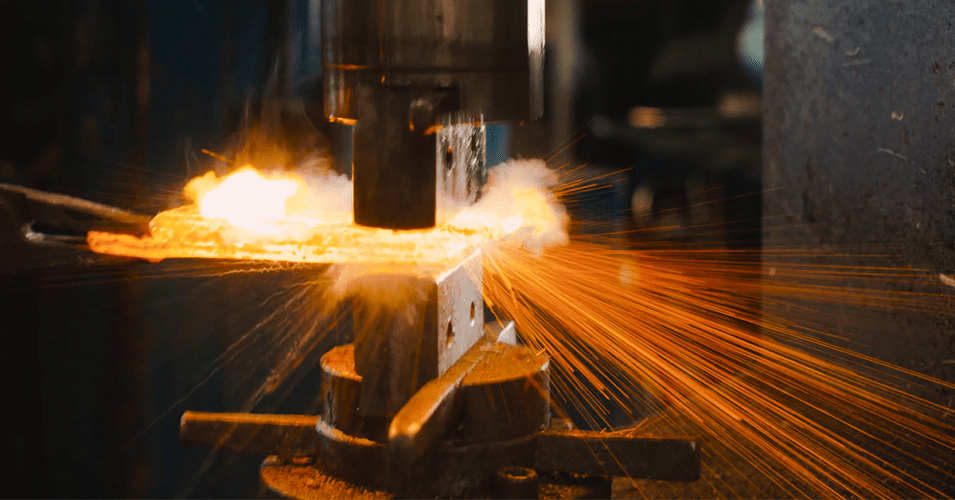In the ever-evolving landscape of automotive manufacturing, innovation is the driving force behind the development of safer, more efficient, and environmentally friendly vehicles. Among the various manufacturing techniques employed in the automotive industry, hot forging stands out as a time-tested process that continues to play a crucial role in shaping the future of transportation. This blog explores the significance of hot forging in automotive manufacturing and how it is fostering innovation within the industry.
The Basics of Hot Forging
Before delving into the innovative aspects, let’s first understand what hot forging entails. Hot forging is a manufacturing process that involves heating a metal billet to a high temperature and then shaping it into the desired component by applying pressure through a die. This process offers several advantages that make it indispensable in automotive manufacturing:
- Enhanced Material Properties: Hot forging improves the mechanical properties of metals, making them stronger, more durable, and better suited for the demanding conditions in automotive applications.
- Precision and Consistency: Hot forging allows for precise shaping of complex components, ensuring tight tolerances and consistency in the finished parts.
- Reduced Material Waste: Compared to other manufacturing methods like casting, hot forging generates minimal material waste, contributing to cost-efficiency and sustainability.
- Improved Grain Structure: The heating and shaping process refines the grain structure of the metal, enhancing its resistance to fatigue and cracking.
Now, let’s explore how hot forging is driving innovation in the automotive industry:
1. Lightweighting for Fuel Efficiency
One of the most significant challenges facing the automotive industry is improving fuel efficiency and reducing emissions. Hot forging plays a crucial role in addressing this challenge through lightweighting. By using hot-forged components, automakers can replace heavier parts with lighter yet equally strong alternatives. For instance, hot-forged aluminum components are becoming increasingly common, helping reduce a vehicle’s overall weight and, consequently, its fuel consumption and emissions.
2. Complex Geometries for Enhanced Performance
As automotive designs become more advanced and aerodynamic, the demand for complex-shaped components has surged. Hot forging excels in producing components with intricate geometries, such as suspension components, steering knuckles, and transmission parts. These precisely engineered components contribute to improved vehicle performance, handling, and safety.
3. Sustainability and Reduced Waste
Innovations in hot forging techniques are helping the automotive industry become more sustainable. The process generates minimal waste and can utilize recycled materials. Furthermore, advancements in energy-efficient heating methods and closed-loop systems are reducing the environmental footprint of hot forging, aligning it with the industry’s growing commitment to sustainability.
4. Material Advancements
Continuous research and development efforts in metallurgy have led to the creation of new materials that are particularly well-suited for hot forging. Advanced alloys and composites offer improved strength-to-weight ratios, corrosion resistance, and thermal stability, allowing automakers to develop safer and more efficient vehicles.
5. Integration of Automation and Industry 4.0
Innovation in hot forging extends beyond the metallurgical realm. The integration of automation and Industry 4.0 technologies has revolutionized manufacturing processes. Automated forging lines equipped with sensors and real-time monitoring systems ensure consistent quality and efficiency. Data analytics and machine learning algorithms are also being employed to optimize the hot forging process, making it even more precise and efficient.
Conclusion
Hot forging remains an indispensable part of automotive manufacturing, and its continued evolution is driving innovation across the industry. From lightweighting for fuel efficiency to producing complex components and promoting sustainability, hot forging is at the forefront of shaping the future of automotive technology.
As the automotive industry races toward a greener, more efficient future, hot forging stands as a testament to the enduring value of traditional manufacturing methods infused with cutting-edge innovations. It’s clear that hot forging is not just a part of automotive history; it’s a key player in its future, forging the way for safer, more efficient, and environmentally friendly vehicles.
